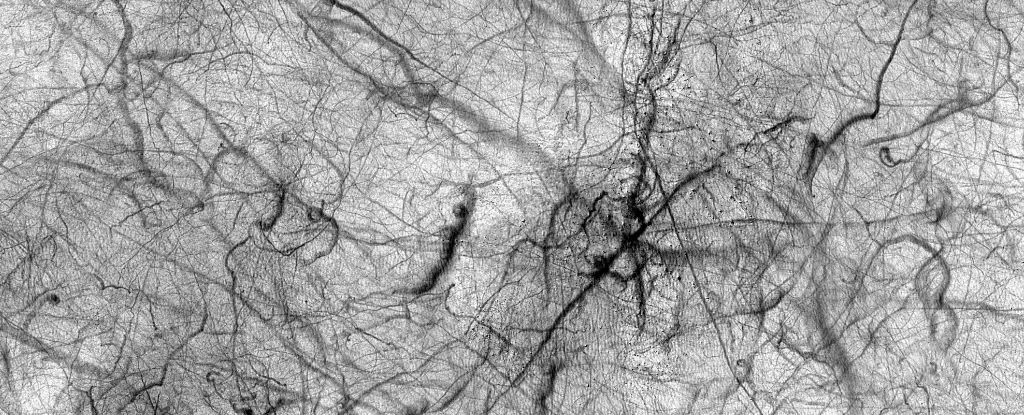NASA’s exploration of Mars has unveiled a captivating phenomenon: dust devils. These spiraling whirlwinds traverse the Martian landscape, offering researchers invaluable insights into the planet’s atmospheric dynamics. Recently captured by the HiRISE camera aboard the Mars Reconnaissance Orbiter in September 2022, a stunning image reveals these dust devils etched across the surface of the Haldane Crater. By analyzing these ephemeral tracks, scientists can gauge how dust accumulates on Mars, thereby enhancing our understanding of its climate and weather processes, which are markedly different from conditions on Earth.
Mars, often referred to as the “Red Planet,” stands out in our solar system, not only due to its distinctive reddish hue—stemming from iron oxide within its soil—but also because of its thin, predominantly carbon dioxide atmosphere. Comprising approximately 95% carbon dioxide, with traces of nitrogen, argon, and oxygen, this atmosphere has a density merely 1% of Earth’s. Such sparse atmospheric conditions render Mars an inhospitable environment for human life, unless augmented by advanced technology. The average temperature on Mars hovers around -60 °C, revealing a stark and chilly world.
Scientists have unearthed geological evidence pointing toward a once-thriving Martian environment, possibly hosting liquid water and a thicker atmosphere conducive to life. The understanding of Mars has evolved dramatically, showing that its surface is not only varied—featuring vast volcanic plains and canyons like Olympus Mons and Valles Marineris—but also dynamic, with weather patterns driven by its atmosphere.
Dust devils on Mars behave similarly to tornadoes on Earth, formed by the natural heating of the surface. During the day, the sun heats various areas unevenly, causing warm air to rise rapidly. As this warm air ascends, it creates a vacuum that pulls dust and loose particles upwards in a rotating column, manifesting into dust devils that can vary significantly in size and duration. While many might be harmless, some colossal dust devils can encompass kilometers in width and persist for extended periods, significantly impacting the Martian surface.
Understanding these phenomena is crucial to grasp the broader implications of Martian weather. Dust devils do more than just swirl across the red landscape; they play a pivotal role in redistributing dust, integral to weather patterns and the overall climate of Mars. This unique weather event is a delicate balance of nature, fostering both a cleaning and depositing effect on solar panels and scientific instruments stationed on the surface.
As scientists continue studying dust devils, it becomes evident that they present both challenges and benefits, especially to missions utilizing solar energy. While these whirlwinds can clear dust from solar panels—thereby enhancing their efficiency—persistent dust deposition can act as an obstacle, obstructing sunlight and reducing power output. The duality of dust devils illustrates the unpredictable nature of Martian weather, showcasing how these occurring phenomena can both hinder and aid human endeavors on the planet.
Researchers are currently deepening their analysis of dust devil tracks to understand better the deposition rates of Martian dust. This knowledge is invaluable for planning future missions, as accurate predictions of surface conditions can inform decision-making processes regarding equipment design and mission strategy.
The importance of studying dust devils extends beyond immediate scientific curiosity; it is instrumental for safeguarding the success of future Mars missions. Gaining insights into Martian atmospheric phenomena will allow scientists to devise better technologies and strategies to cope with the harsh realities of the Martian environment.
As we continue to learn about the Red Planet, dust devils serve as a fascinating reminder of the dynamic and intricate nature of extraterrestrial weather systems, illuminating a world that, while remote, holds infinite potential for discovery. The relentless dance of dust devils is a testament to the remarkable and often harsh conditions in which researchers strive to uncover the secrets of Mars.

